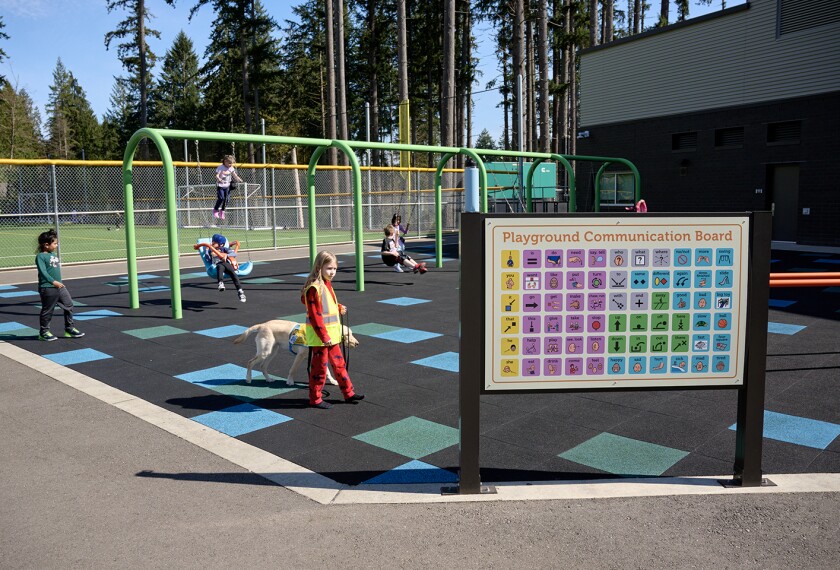Fewer students feel connected to people at their school now than in 2021, when many districts were still operating on remote or hybrid schedules, according to the recently published results of the U.S. Centers for Disease Control and Prevention’s biennial survey of high school students.
In 2021, about 62 percent of students said they felt close to people at their school. That figure dropped to 55 percent in 2023, according to the Youth Risk Behavior Survey, a nationally representative study of U.S. high school students.
The decrease coincides with districts reporting increases in chronic absenteeism and behavioral challenges, and as schools struggle to help students catch up following pandemic closures. Research has linked strong student connections to school and their teachers with improved mental health, better attendance and grades, less disruptive behavior, and lower dropout rates.
“This is all connected and we’re at such a critical time right now in education,” said David Arencibia, a former middle school principal and the 2022 Texas Secondary Principal of the Year who now runs a company focused on strengthening schools’ culture. “We all really need to be all-in on addressing this.”
They’re not a silver bullet to solving all of the problems plaguing students and schools, but relationships with peers and adults give students a reason to attend school, engage in class, and participate in extracurricular activities. Strong relationships can also help teachers detect when students are struggling and need extra support.
These connections have been especially difficult to maintain for girls and students who identify as LGBTQ+.
Girls were more than 10 percentage points less likely than boys to say they felt close to people at school, according to the survey. Fifty percent of girls said they felt close to others at school, compared with 60 percent of boys.
LGBTQ+ students were 13 percentage points less likely than heterosexual and cisgender students to report feeling close to others at school.
Along with some of the well-documented challenges students have faced in recent years—from poor mental health to higher rates of poverty and homelessness—Arencibia said at least some of the problem can be traced back to high levels of teacher and administrator turnover during the pandemic.
When experienced educators and leaders left, they took a lot of valuable experience and, in some cases, important connections with students with them. Teachers and administrators new to their positions should consider additional training on the importance of school culture and how to build a positive and engaging environment, he said.
“There was a wealth of knowledge that basically left the classroom, and we need to be intentional about continuing to build that as we staff schools,” Arencibia said.
The CDC has identified mentoring, service learning, student-led clubs, and classroom-management training for teachers as strategies schools can use to build connectedness, which can in turn reduce unhealthy behaviors and strengthen students’ engagement.
It’s tough work that takes intentionality and dedication, but the payoff can be huge, Arencibia said. Research backs that up.
Studies have shown that building connectedness and a sense of belonging at school can benefit students well into adulthood.
CDC researchers tracked more than 14,000 middle and high school students over 20 years and, in a 2019 study, found that those who reported feeling connected to school as adolescents were half as likely—or even less likely—than those who didn’t to have used illegal drugs or misused prescription drugs, been diagnosed with a sexually transmitted disease, experienced emotional distress and thoughts of suicide, or been the victim of physical violence as adults.
Ultimately, the data showing students feel less connected to people in their school reinforces the conclusion that “old-fashioned” teaching methods won’t work anymore, Arencibia said. Students need more opportunities to collaborate with each other and their teachers.
“The days of passing out a worksheet and then walking away or just standing and delivering a lecture are passed now,” he said. “They need active and collaborative classrooms where they can make these connections.”










